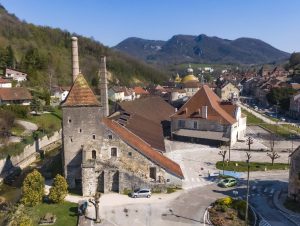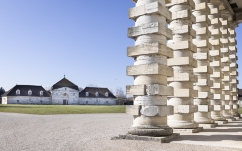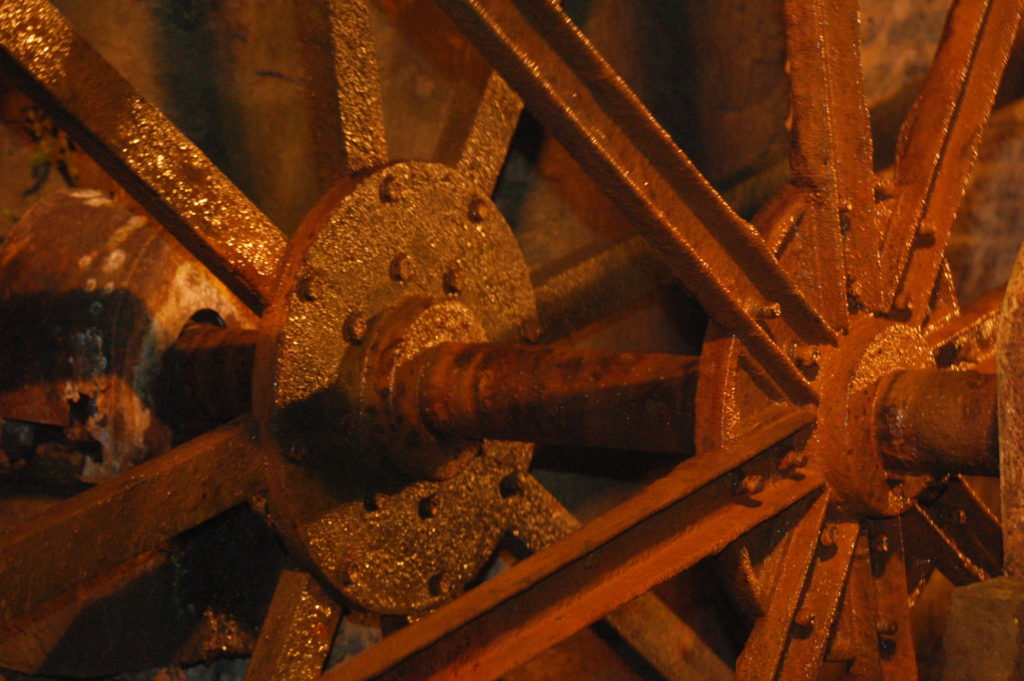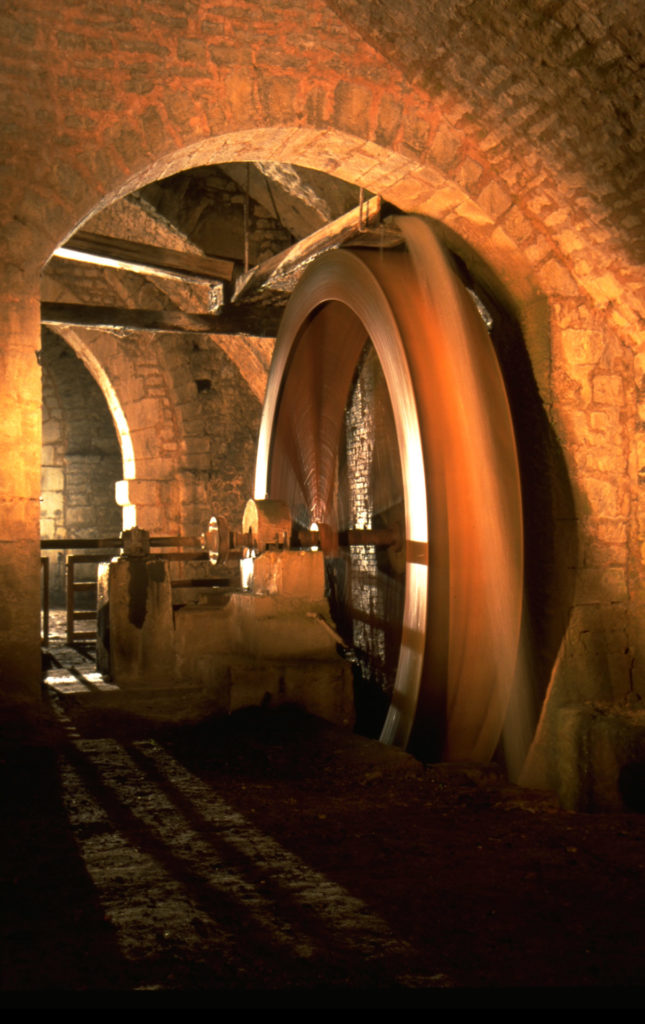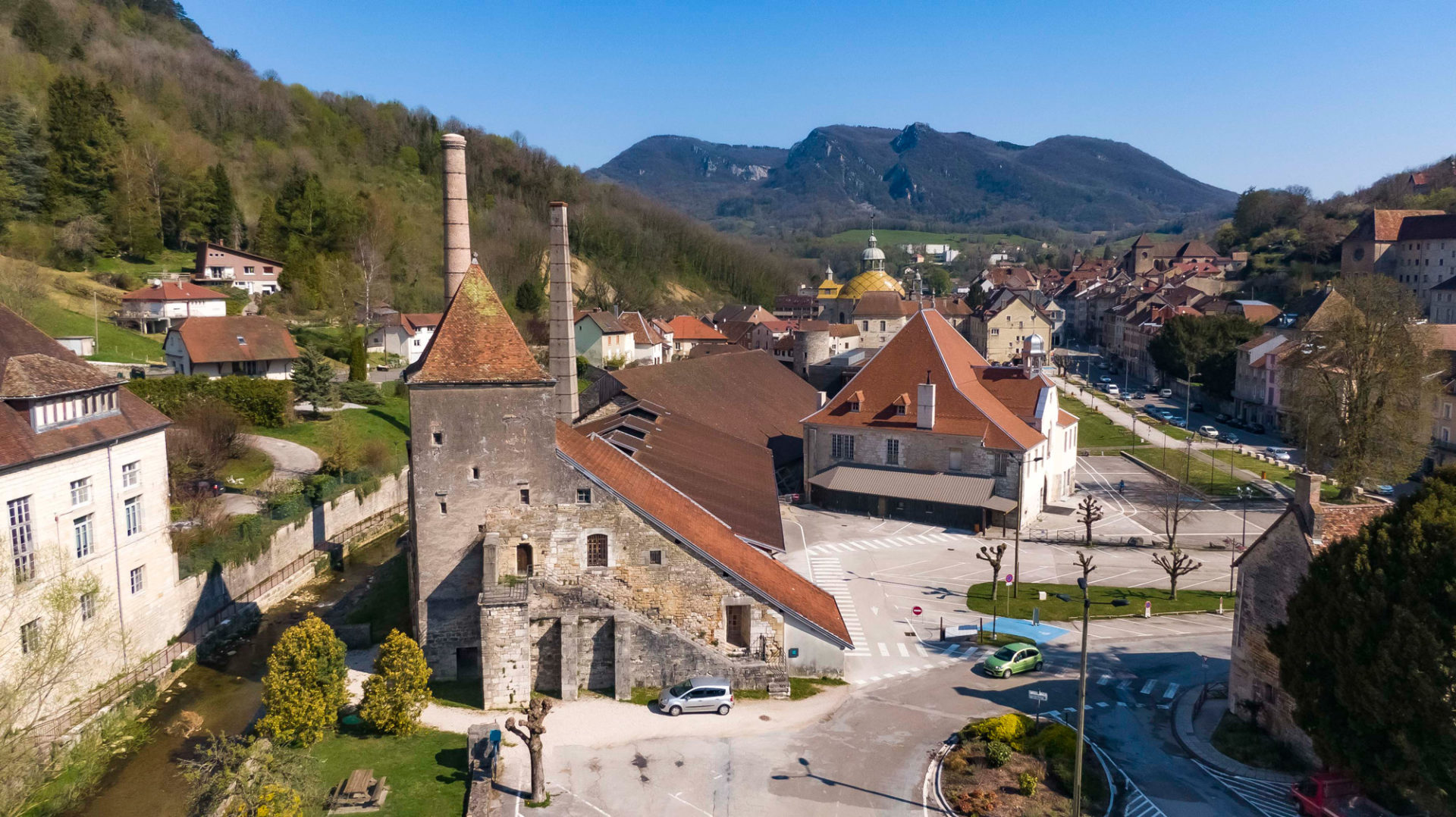
1200 years of history
In the heart of Jura, the Grande Saline of Salins-les-Bains is a jewel of the Franche-Comté’s heritage. Founded 1,200 years ago, it represents an industrial model by its technological evolution and extraordinary longevity, as one of the oldest factory in France. Its business model shows rigorous resource management from the outset. Socially innovative from the 15th century onwards, it offered nationally unequalled protection for its workers.
The descent into the wells reveals a 12th-century vaulted gallery of 165 metres long. These ancestral stones preserve and protect an ingenious pumping system dated on the 18th-century : a bucket wheel, still in operation, powered by the Furieuse river, silently drives a 32-meter wooden pendulum and a pump, drawing salt water at 246 meters depth.
A wealth of archives provides a better understanding of the lives of the men and women who worked at the Grande Saline.
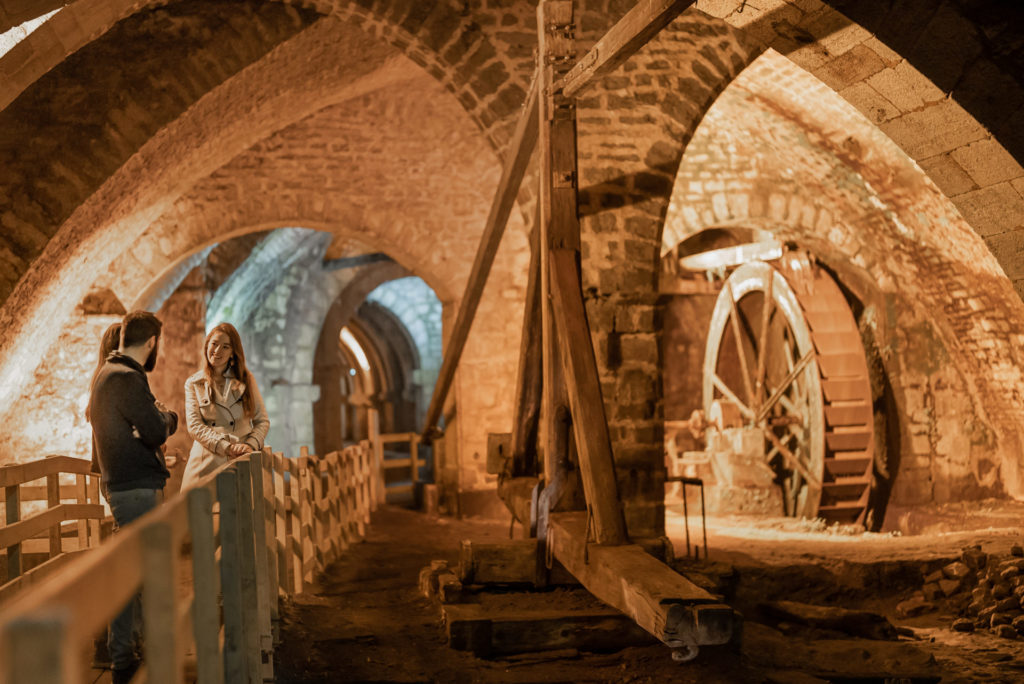
A treasure to protect
The salt produced in Salins is called “igniferous salt” (coming from the latin word ignis which means fire). It’s getting by heating up the salty waters using wood or coal, in opposition to the salt marshes on sea where the salt is crystallizing thanks to the sun and the wind.
Irreplaceable and indispensable to preserve food in the Middle Ages, salt was called “white gold”. Its production was a source of wealth for sovereigns and a matter of survival for populations. In the 17th century, the Grande Saline produced 14,000 tons of salt a year, generating half the region’s income and supplying Burgundy, Franche-Comté and Switzerland. As the economic capital of Franche-Comté in the 17th century, Salins set up a defensive system to protect its wealth from greeds. The Grande Saline itself was fortified and differed from the other industrial sites in the region by its self-sufficient functioning: it became a real fortress.

The end of the exploitation
At the end of the 19th century, the Grande Saline declined because of economic pressures due to the end of the state monopoly on salt, rising costs for the combustible and falling salt prices. The creation of the first spa establishment in 1854 maintained a seasonal activity. Contractually linked in 1860, Grande Saline supplied particular waters, very concentrated in mineral salts, for thermal treatments. Faced with competition from salt marshes, the Grande Saline closed its doors in 1962. Il reopened in 1966 when the town of Salins-les-Bains bought it, transforming the site into a heritage and touristic place.

A Memory of workers, a heritage identity
The Grande Saline closed its doors in 1962, leaving us with a wealth of documents and personal testimonies. Its very rich archives dating on the Middle Ages are being studied by researchers in the region. Over a hundred hours of extraordinarily precious recordings of the last workers (made by the Musées des Techniques et des Cultures Comtoises) have been collected: they help us to better understand the extreme working conditions of the saltworkers and allow us to perpetuate their memory. A film, projected in the evaporation building, compiles some of these testimonies and the rare existing archive images of saltworks in activity in the 20th century.

